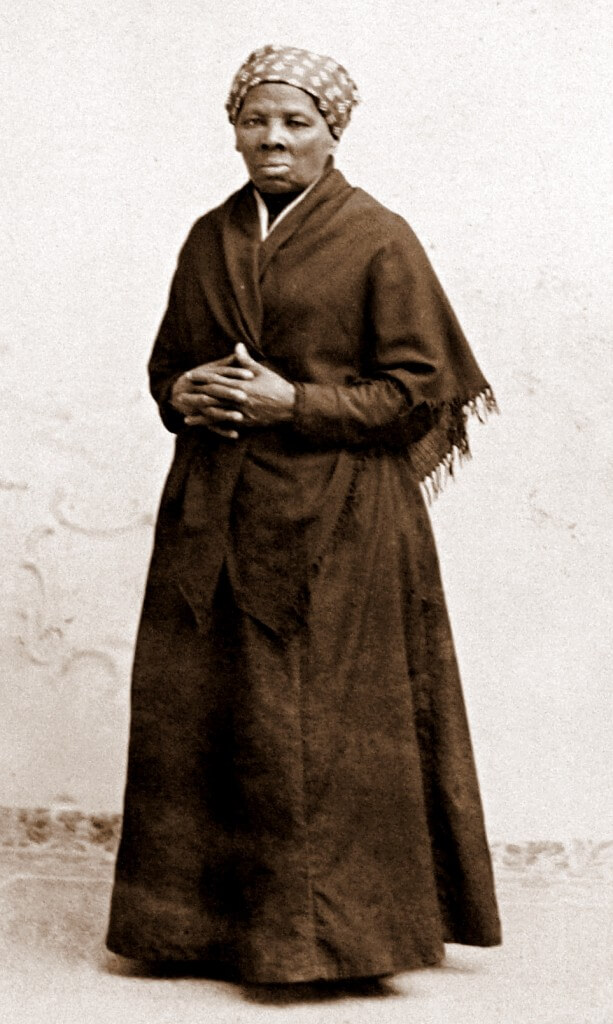While Frederick Douglass disguised himself as a sailor to make his way to the North, other slaves gained their freedom from the water in more direct ways. Though sailing gives me a sense of freedom today, these runaways were gaining far more than just a feeling of liberty; they were literally stealing themselves away, realizing their personal liberation. These slaves escaped by commandeering craft, stowing away, and simply jumping ship when the opportunity arose.
As anyone who has plied the Chesapeake today can imagine, it would be difficult, but not impossible, to travel from its southernmost reaches to the head of the bay without coming close enough to another human being for them to see your face. Surely dozens, if not hundreds of slaves did something just like that, travelling in small canoes and sailing craft in the dark of cloudy, moonless nights and hiding out in deep marshes, forested areas, and uninhabited islands during the day. While her exact route is uncertain, Harriet Tubman almost surely did just that when she escaped from a plantation near Preston, Maryland in 1849. It is likely she rowed her way north on the Choptank River before making her way overland to Pennsylvania with the assistance of members of the Society of Friends, otherwise known as Quakers, who abhorred slavery. After gaining her freedom, Tubman worked to liberate others, making numerous trips back into Maryland and guiding slaves northward. Frederick Douglass called Tubman “Moses” for leading so many to the Promised Land in this way. But, unlike Moses, she did not part the sea, instead making use of canoes and sailing vessels to convey escaping slaves from the Eastern Shore to Baltimore and points further north on the Chesapeake from which she could more easily guide the runaways into Pennsylvania. The Underground Railroad sometimes entailed a waterborne passage.
Some runaways, like Tubman, would pilot their own craft northward,. But many others stowed away amongst cargo on bay or coasting vessels, sometimes with the aid of a black seaman or even the captain, guided by religious belief, kindness, or greed. As we made our way southward, down the Intracoastal Waterway and across the Albemarle Sound, I was reminded of one of those slaves who had gained her freedom as cargo on a vessel. From Edenton, North Carolina, 40 miles west of the ICW on the Albemarle, Harriet Jacobs finally escaped to the North shortly before the Civil War aboard a schooner. Relatives of hers had negotiated with the captain to carry her north. Though a southerner by birth and the brother of a slave trader, the captain was motivated to take her by his own distaste for the slave system, though the cash Jacobs’s uncle paid did not hurt either. The trip from Edenton to Philadelphia took ten days, and they covered a route well known to many cruisers, up the Chesapeake and, presumably, through the C&D Canal to the Delaware. Though Jacobs had never been sailing before, she would forever remember her experience on the water on the way to freedom, writing in her autobiography
, “The balmy air of spring was so refreshing! And how shall I describe my sensations when were fairly sailing on Chesapeake Bay? O, the beautiful sunshine! The exhilarating breeze!” Though she was obviously thrilled by the thought of gaining her freedom, what cruiser today would not share her sentiments?
Though sailing vessels had borne Africans across the Atlantic and into bondage, watercraft did, at times, also deliver the descendants of these men and women to freedom. Thinking about this while out on Bear reminds me of the rich history of the areas we passed by, the many associations that surround sailing vessels, and the deep meaning of that freedom that I feel while on the water. Tomorrow, I will say a little about how the way of the ship could bring slaves a heightened sense of freedom and provide free seamen of color a glimpse at what an equitable world might look like.


